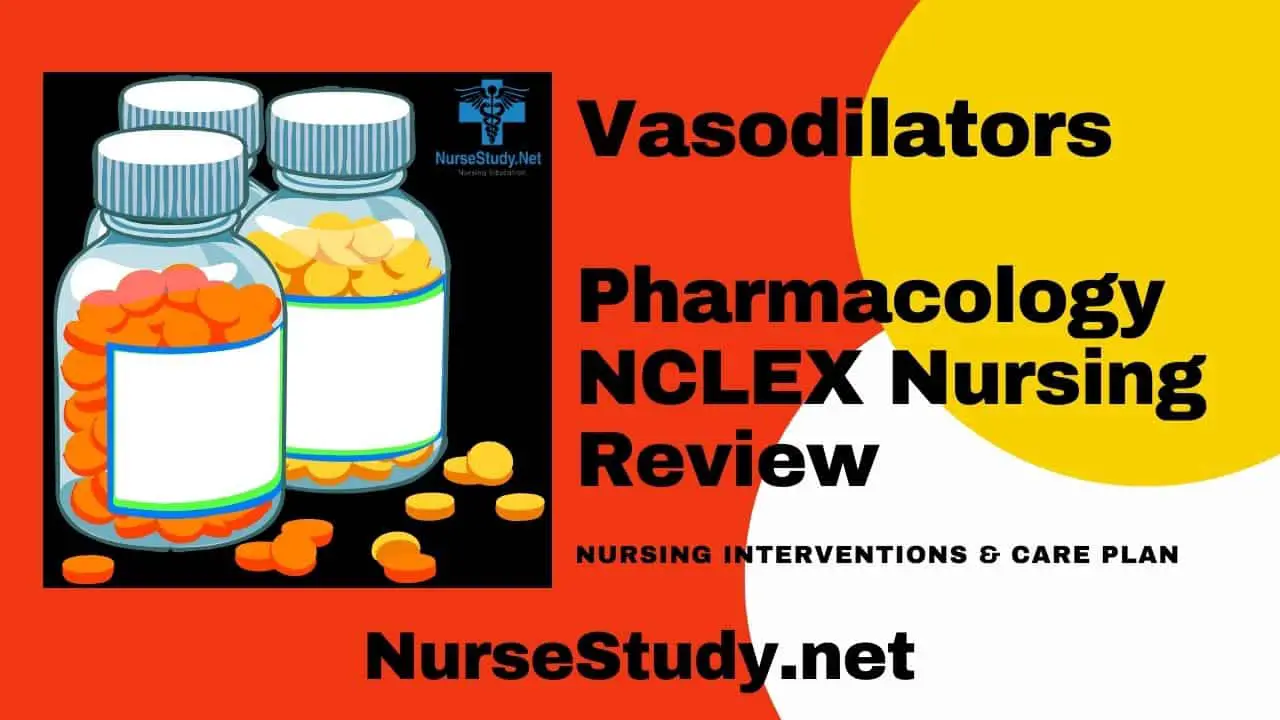Vasodilators are medications that dilate (widen) blood vessels, reducing blood pressure and improving blood flow. They are crucial in treating various cardiovascular conditions.
Generic names: Hydralazine, Minoxidil, Nitroglycerin, Isosorbide Dinitrate, Isosorbide Mononitrate
Brand names: Apresoline, Loniten, Nitrostat, Isordil, Imdur
Pharmacologic class: Direct-acting vasodilators, Nitrates, Alpha-blockers
Therapeutic class: Antihypertensive, Antianginal
Mechanism of action: Vasodilators relax smooth muscle in blood vessel walls, causing vasodilation. This reduces peripheral vascular resistance and blood pressure, improving blood flow and oxygen delivery to tissues.
Indications for use: Hypertension, heart failure, angina, pulmonary hypertension, and Raynaud’s phenomenon. Some vasodilators are used for acute relief of angina symptoms, while others are prescribed for long-term management of chronic conditions.
Precautions and contraindications: Hypersensitivity to specific vasodilators, severe aortic stenosis, hypertrophic cardiomyopathy, recent myocardial infarction, severe hypotension, pregnancy (some vasodilators), and concurrent use of erectile dysfunction medications with nitrates.
Drug Interactions
- Phosphodiesterase inhibitors (e.g., sildenafil) – severe hypotension risk
- Beta-blockers may enhance hypotensive effects
- Alcohol can increase vasodilation
- NSAIDs may decrease antihypertensive effects
- Diuretics may enhance orthostatic hypotension
Adverse Effects
- Orthostatic hypotension
- Reflex tachycardia
- Headache
- Dizziness, lightheadedness
- Flushing
- Edema
- Nasal congestion
- Palpitations
- Gastrointestinal disturbances
- Lupus-like syndrome (with hydralazine)
Administration Considerations
Available preparations: Tablets, capsules, sublingual tablets, transdermal patches, topical ointments, and IV solutions.
Routes of administration:
- Oral (tablets, capsules)
- Sublingual (for immediate relief of angina)
- Transdermal (patches)
- Topical (ointments)
- Intravenous (in hospital settings)
Nursing Considerations for Vasodilators
Related Nursing Diagnoses
- Decreased cardiac output
- Risk for falls
- Ineffective tissue perfusion
- Activity intolerance
- Deficient knowledge regarding medication regimen
Nursing Assessment
- Assess vital signs, especially blood pressure and heart rate, before and after administration.
- Monitor for orthostatic hypotension by checking BP lying, sitting, and standing.
- Evaluate cardiac rhythm and the presence of chest pain.
- Assess for peripheral edema.
- Monitor for signs of hypotension: dizziness, lightheadedness, syncope.
- Check for medication allergies and current medication list.
Nursing Interventions
- Administer medications as prescribed, following specific timing guidelines
- Monitor BP frequently, especially during dose adjustments
- Assist with position changes to prevent orthostatic hypotension
- Ensure proper sublingual administration technique for nitroglycerin
- Monitor for drug-specific adverse effects
- Keep nitroglycerin readily available for patients with angina
- Document response to medication and any adverse effects
Patient Teaching Associated with Vasodilators
- Change positions slowly to prevent orthostatic hypotension
- Report symptoms of severe headache, persistent dizziness, or fainting
- Maintain proper storage of medications (especially nitroglycerin)
- Explain the proper technique for sublingual administration
- Avoid alcohol while taking vasodilators
- Continue taking medication even when feeling well
- Do not stop the medication abruptly without consulting the healthcare provider
- Wear medical identification indicating vasodilator use
- Report chest pain that doesn’t respond to prescribed nitroglycerin protocol
This is not an all-inclusive list of possible drug interactions, adverse effects, precautions, nursing considerations, or patient instructions. Please consult further with a pharmacist for complete information.
References
- Hariri L, Patel JB. Vasodilators. [Updated 2023 Aug 14]. In: StatPearls [Internet]. Treasure Island (FL): StatPearls Publishing; 2024 Jan-. Available from: https://www.ncbi.nlm.nih.gov/books/NBK554423/
- Levy PD, Laribi S, Mebazaa A. Vasodilators in Acute Heart Failure: Review of the Latest Studies. Curr Emerg Hosp Med Rep. 2014 Jun;2(2):126-132. doi: 10.1007/s40138-014-0040-z. PMID: 24855585; PMCID: PMC4023865.
- Ramanlal R, Gupta V. Physiology, Vasodilation. [Updated 2023 Jan 23]. In: StatPearls [Internet]. Treasure Island (FL): StatPearls Publishing; 2024 Jan-. Available from: https://www.ncbi.nlm.nih.gov/books/NBK557562/
- Singh A, Laribi S, Teerlink JR, Mebazaa A. Agents with vasodilator properties in acute heart failure. Eur Heart J. 2017 Feb 1;38(5):317-325. doi: 10.1093/eurheartj/ehv755. PMID: 28201723.
